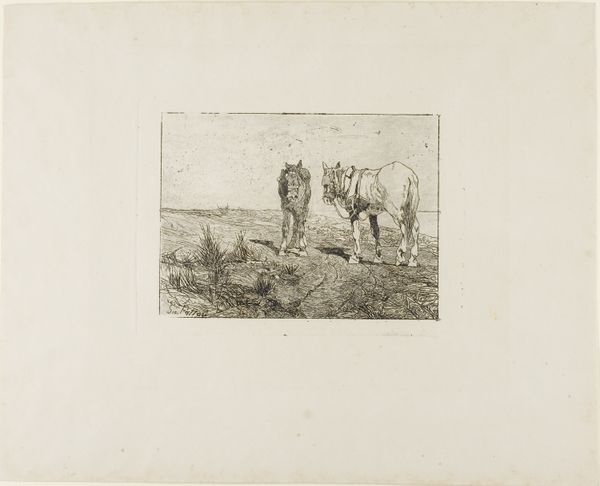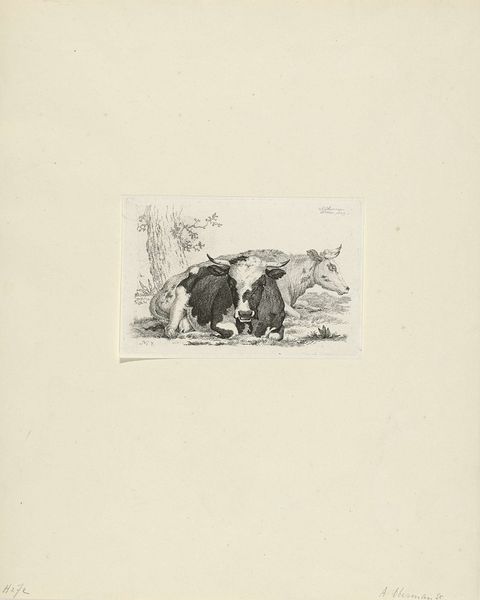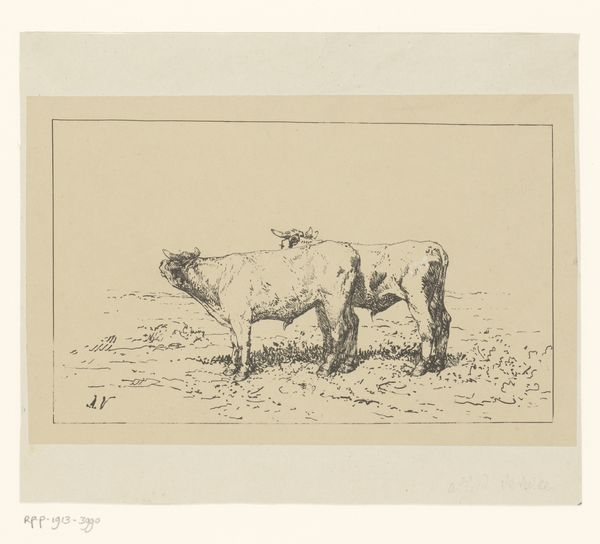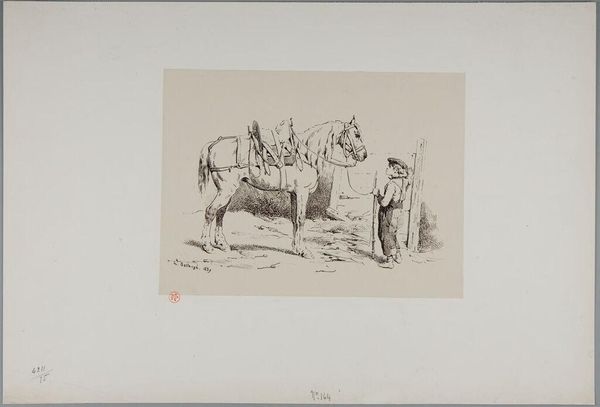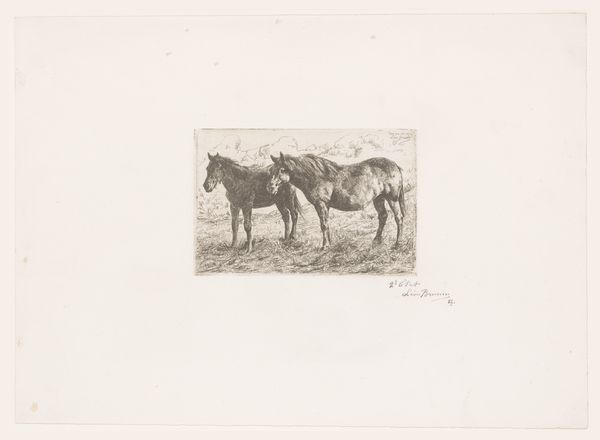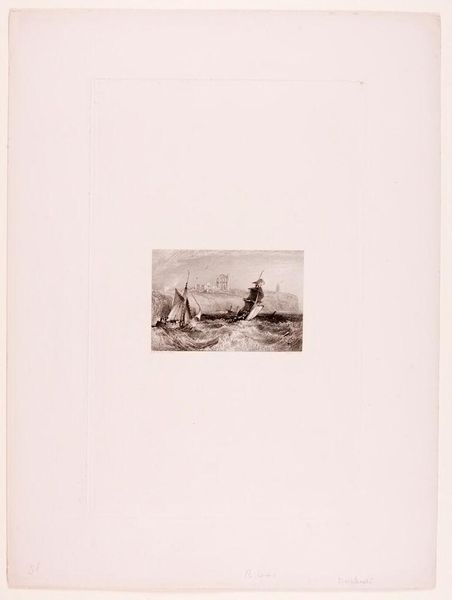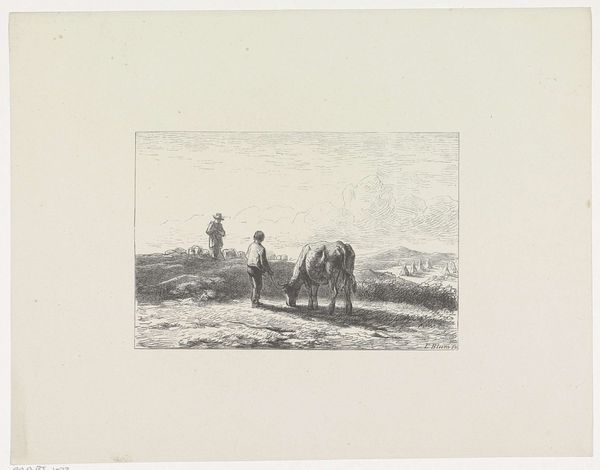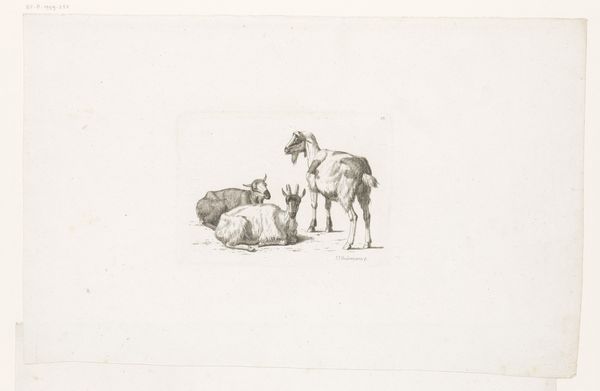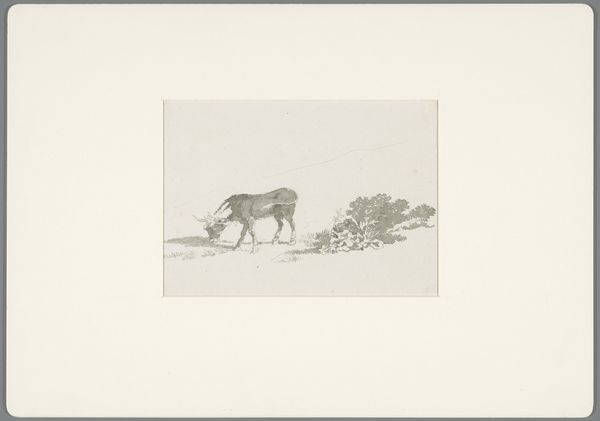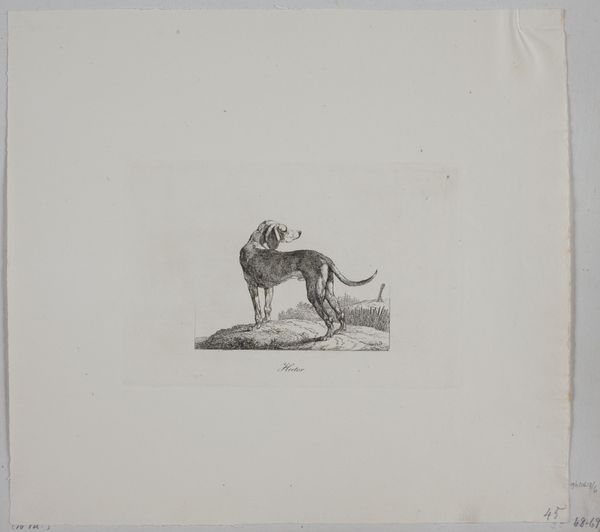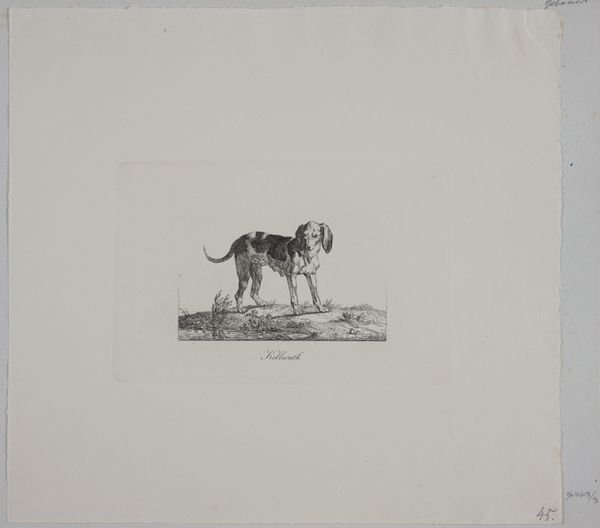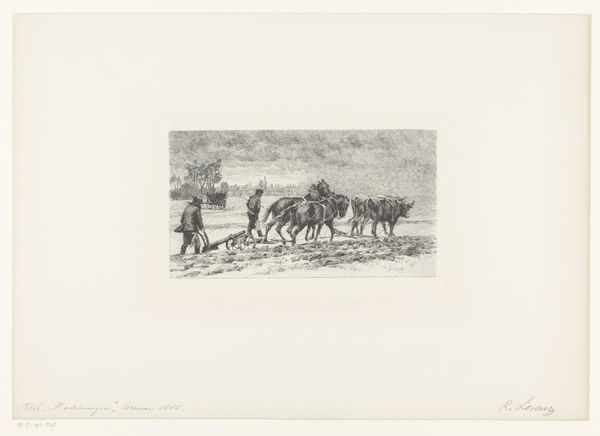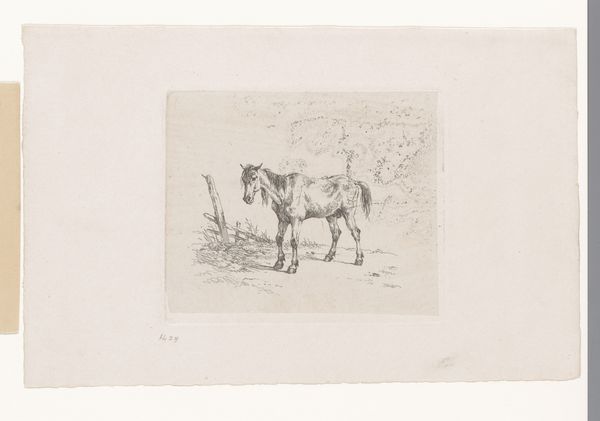
drawing, etching, pencil
#
drawing
#
narrative-art
#
etching
#
pencil sketch
#
landscape
#
figuration
#
romanticism
#
pen-ink sketch
#
pencil
Dimensions: height 95 mm, width 160 mm, height 400 mm, width 293 mm
Copyright: Rijks Museum: Open Domain
Curator: What immediately strikes me is this palpable sense of weary resignation. It's delicate yet imbued with profound melancholy. Editor: Indeed. This etching, made in 1823 by Théodore Géricault, is entitled "Jockey stapt met zijn paard" and currently resides here at the Rijksmuseum. It offers an insightful glance into the relationship between man and animal, set against what appears to be the backdrop of equestrian sports. Curator: The etching’s stark simplicity underscores its raw emotional depth. The bond depicted goes beyond mere functionality. The way the man gently leads the horse suggests intimacy or understanding—a mirroring of burdens shared. Editor: Géricault, deeply rooted in Romanticism, masterfully employs symbolism. The horse—a longstanding emblem of strength and freedom—now walks wearily beside his rider, who seems equally depleted. Is it representative of society’s toils during that period or maybe something more intimate from the artist’s life? Curator: Absolutely! There's also a spiritual parallel between rider and horse; the horse’s spirit subdued reflects maybe an imposed or adopted restraint upon natural instinct and passion. Consider this too—equestrian culture has always symbolized human control over the natural world; it brings to bear ideas on the morality of domination, both individual and institutional. Editor: I feel an honesty in Géricault's method that heightens this further; the quick etching marks do little to glamourise or elevate but serve only to record something fleeting, capturing essence over grandiose narrative. The narrative implied through pose, composition and gesture suggests an exhausted partnership rather than conquest. Curator: It resonates with archetypes far deeper than sporting pastime, reflecting instead themes tied closely with fate, shared mortality and endurance amid trials—universal even! And to circle back, consider how the simplicity of line work facilitates emotional intensity here— it isn’t reliant upon detail— rather its economy amplifies pathos embedded throughout history with equines. Editor: Exactly, it is a visual poem about shared burden—enduring together! Each glance further rewards observation, making "Jockey stapt met zijn paard" more profound upon each visit. Curator: And Géricault gives space for one to connect to those historical archetypes. I agree; let's make our way onward.
Comments
No comments
Be the first to comment and join the conversation on the ultimate creative platform.

